
Helen Frankenthaler was an American abstract expressionist painter. She was a major contributor to the history of postwar American painting. Having exhibited her work for over six decades, she spanned several generations of abstract painters while continuing to produce vital and ever-changing new work. Frankenthaler began exhibiting her large-scale abstract expressionist paintings in contemporary museums and galleries in the early 1950s. She was included in the 1964 Post-Painterly Abstraction exhibition curated by Clement Greenberg that introduced a newer generation of abstract painting that came to be known as color field. Born in Manhattan, she was influenced by Greenberg, Hans Hofmann, and Jackson Pollock's paintings. Her work has been the subject of several retrospective exhibitions, including a 1989 retrospective at the Museum of Modern Art in New York City, and been exhibited worldwide since the 1950s. In 2001, she was awarded the National Medal of Arts.

Lenore "Lee" Krasner was an American Abstract Expressionist painter and visual artist active primarily in New York. She received her early academic training at the Women's Art School of Cooper Union, and the National Academy of Design from 1928 to 1932. Krasner's exposure to Post-Impressionism at the newly opened Museum of Modern Art in 1929 led to a sustained interest in modern art. In 1937, she enrolled in classes taught by Hans Hofmann, which led her to integrate influences of Cubism into her paintings. During the Great Depression, Krasner joined the Works Progress Administration's Federal Art Project, transitioning to war propaganda artworks during the War Services era.
Janet Dawson MBE is an Australian artist who was a pioneer of abstract painting in Australia in the 1960s, having been introduced to abstraction during studies in England while she lived in Europe 1957–1960 She was also an accomplished lithographic printer of her own works as well as those of other renowned Australian artists, a theatre-set and furniture designer. She studied in England and Italy on scholarships before returning to Australia in 1960. She won the Art Gallery of New South Wales Archibald Prize in 1973 with the portrait of her husband, Michael Boddy Reading. She has exhibited across Australia and overseas, and her work is held in major Australian and English collections. In 1977 she was awarded an MBE for services to art.
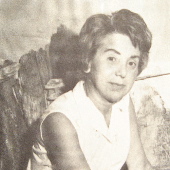
Jane Schenthal Frank was an American multidisciplinary artist, known as a painter, sculptor, mixed media artist, illustrator, and textile artist. Her landscape-like, mixed-media abstract paintings are included in public collections, including those of the Corcoran Gallery of Art, the Baltimore Museum of Art, and the Smithsonian American Art Museum. She studied with artists, Hans Hofmann and Norman Carlberg.
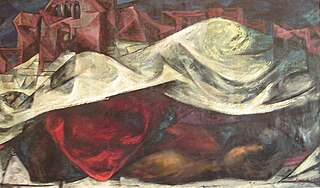
Elaine Hamilton-O'Neal, professionally known as Elaine Hamilton, was an internationally known American abstract painter and muralist born near Catonsville, Maryland. She was professionally admired by the influential French critic Michel Tapié de Céleyran and exhibited internationally in solo and multiple-artist exhibits in the United States, Mexico, South Asia, Japan, and throughout Europe. She showed twice in the Venice Biennale and won first prize at the 1968 Biennale de Menton in France. She is known for the work of her final stylistic phase, known as action painting.
Sylvia Snowden is an African American abstract painter who works with acrylics, oil pastels, and mixed media to create textured works that convey the "feel of paint". Many museums have hosted her art in exhibits, while several have added her works to their permanent collections.
Lila Katzen, born Lila Pell, was an American sculptor of fluid, large-scale metal abstractions.

Agnes Weinrich was an American visual artist. In the early twentieth century, she played a critical role in introducing cubist theory to American artists, collectors, and the general public and became one of the first American abstractionists. A life-long proponent of modernist art, she was an active participant in the art communities of Provincetown and New York. Early in her career, she traveled widely in Europe and spent extended periods studying in Paris and Berlin. She also studied art in Chicago, Provincetown, and New York. During most of her career, she worked in a Provincetown studio during the warm months and a Manhattan studio during the cold ones. Weinrich's easel work included oil paintings, watercolors, and pastels. She also made block prints and etchings and drew using pencil and crayon. Her paintings, prints, and drawings appeared in solo and group exhibitions throughout her career and she received favorable critical attention both during her life and after her death.
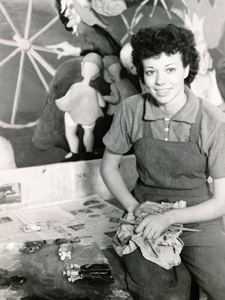
Bernice Cross (1912–1996) was an American artist and art instructor born in Iowa City, Iowa, who was based in Washington, D.C. for most of her professional career. Known for her originality, creative imagination, sense of humor, and love of fantasy, she painted with a deceptive simplicity and handled color and form with subtlety and a sure touch.

Jennie C. Jones is an African-American artist living and working in Brooklyn, New York. Her work has been described, by Ken Johnson, as evoking minimalism, and paying tribute to the cross-pollination of different genres of music, especially jazz. As an artist, she connects most of her work between art and sound. Such connections are made with multiple mediums, from paintings to sculptures and paper to audio collages. In 2012, Jones was the recipient of the Joyce Alexander Wien Prize, one of the biggest awards given to an individual artist in the United States. The prize honors one African-American artist who has proven their commitment to innovation and creativity, with an award of 50,000 dollars. In December 2015 a 10-year survey of Jones's work, titled Compilation, opened at the Contemporary Arts Museum in Houston, Texas.
Aida Tomescu is an Australian contemporary artist who is known for her abstract paintings, collages, drawings and prints. Tomescu is a winner of the Dobell Prize for Drawing, the Wynne Prize for Landscape and the Sir John Sulman Prize, by the Art Gallery of New South Wales.
Julia Fish is an American artist whose paintings have a deceptive simplicity. She paints in oil on stretched rectangular canvases of varying size. By means of close observation of everyday subjects—leaves of a tree seen through a window, a section of floor tiles, an old fashioned light fixture— she makes, as one critic says, "quiet, abstract manifestations of observed realities." She is a studio artist who paints not what she sees in an instant but rather what she observes continuously, day after day. The result, she says, is not so much temporal as durational. Her paintings compress many instances of observation so as to become, as she sees it, "a parallel system to a lived experience." The paintings lack spatial orientation and, as a critic says, can "be described as both highly realistic and abstract without compromising either term." In 2008, Alan G. Artner, writing in the Chicago Tribune, said "This is work of small refinements and adjustments. The world of everyday things generates it, but Fish's qualities of seeing and touch elevate the things to a plane on which they leave behind their humble character."

Helene Herzbrun (1921–1984) was an American artist who lived and worked within the art community in Washington, D.C. A student and friend of Jack Tworkov, she was a second-generation abstract expressionist who developed a personal style that set her apart from the Color School movement of her time. She was known for abstract landscapes having bold colors and employing gestural brushwork. She was also said to possess an ability to create the illusion of depth without employing graphical perspective. As well as painting, Herzbrun enjoyed a long career gallery administrator and professor of art at American University.
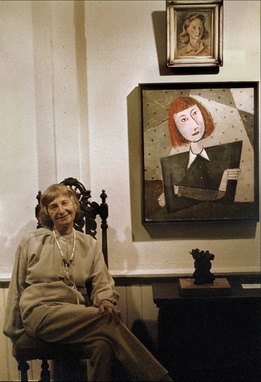
Amalie Rothschild (1916–2001) was an American artist who lived and worked within the art community of Baltimore, Maryland. An accomplished painter and sculptor, she was also an art teacher, philanthropist, patron, and cultural advocate. Over the course of a long career, she made oil and acrylic paintings as well as drawings, watercolors, and other paper works. She also sculpted using found objects, Plexiglas, metals, and particleboard. Originally working in a realist style, she became well known for geometric abstractions based on figurative subjects. In 1993 a critic described this approach as "[walking] a tightrope between the abstract and the representational with a suggestion of three-dimensional depth." Rothschild was by choice a regional artist. Although she occasionally exhibited elsewhere, she did not actively promote her career outside a mid-Atlantic region centered on Baltimore. Thus, in 1997 a critic wrote, "Amalie Rothschild is a fixture and ornament of the Baltimore art world." At the time of her death a critic gave this career summary: "She was one of the leading artists of her time in this area. Her work is thoroughly modern and related to geometric abstraction, but without losing the figure. It has emotional reserve, often contains a hint of humor and at times recalls the childlike sagacity of the great Paul Klee."

Dorothy Eisner (1906–1984) was an American artist whose painting style evolved over many years from an early, quite personal, version of 1930s social realism, through a period of abstract expressionism, and culminating over the last twenty years of her life in a bright painterly style that critics saw as fluid, masterfully composed, and expressionistic. Throughout her long career Eisner maintained a consistency that a gallerist summarized as derived from European modernism but also grounded in American painting of her own generation and the generation before her. Born and raised in Manhattan, she traveled widely and is best known for the late work she made while staying in a summer home off the coast of Maine on Great Cranberry Island.

Edith Bry (1898–1991) was an American painter, printmaker, and glass artist. During her long career she combined technical skill with an impulse to innovate. Critics noted her versatility, pointing to skill in handling oil painting, lithography, etching, drawing, watercolor, and wood carving. Her style ranged from realist to abstract and from what one critic called a "discipline of an inner reticence" to a "more dynamic emotional expressionism." Her early-career still lifes drew praise and a figure-group called "Exiles" received much attention following its acquisition by the Metropolitan Museum of Art. Her mid-career work was more expressive and abstract as she tried, as she put it, to rid herself "from the tyranny of nature." At the end of her career she was particularly known for semi-abstract work in glass and enamel, mainly of religious subjects.
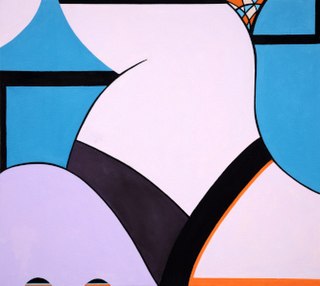
Amanda Church is an American artist known for abstract paintings that reference the human figure and other discernible elements. Her works straddle representational and formalist art traditions, suggesting recognizable body parts, objects, and perspectival elements in an otherwise abstract field. Church's distinctive use of contrasting style elements has been consistently noted by critics such as Hyperallergic's Cora Fisher, who described Church's work as "whimsically overruling the left-right brain dichotomy as well as the traditionally gendered axis that divides geometric and decorative art." Church received a Guggenheim Fellowship in 2015 and a Pollock-Krasner Foundation grant in 2017, among other awards. Her work has been covered in publications such as The New York Times, The Boston Globe, ARTnews, Hyperallergic and Forbes Magazine. Her paintings have been exhibited in major U.S. cities as well as internationally, in galleries and museums such as the Brooklyn Museum of Art and the Aldrich Museum. She lives and works in New York.
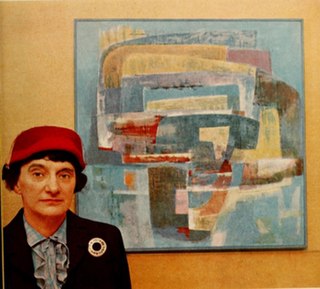
Shelby Shackelford (1899–1987) was an American artist who worked mainly within the art communities of Baltimore, Maryland, and Provincetown, Massachusetts. Her paintings, drawings, and prints were abstract, but not nonobjective. Each of them had, as she said, "a beginning in a visual experience". Early in her career, during a period when many in Baltimore were hostile to what locals called "advanced" trends in art, her paintings were stigmatized as "meaningless stuff". After helping to counteract these local prejudices, she embarked on a long period of experimentation in media and technique, maintaining, as she wrote in 1957, that painting was, "an adventure, a process of discovery for which there should be no end". Critics praised Shackelford for "refinement and sureness of approach and execution", "unusual and amusing arrangements of color and line", "taste and imagination", and "paintings [that] are abstract, well-constructed, with variety of forms, and outstanding color". In addition to making art, Shackelford taught art classes to children and adults, was an active participant in arts organizations, and both wrote and illustrated books that received extensive attention from book reviewers.
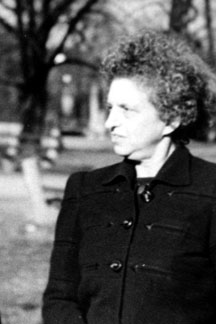
Dorothy Loeb (1877–1971) was an American artist known for her easel art, prints, and murals. She traveled widely in the United States, Mexico, and overseas, residing and working for the most part in Chicago, Manhattan, Eastern Massachusetts, and the State of Querétaro in Mexico. She was also a children's art teacher and proponent of progressive education. Having received training at the Art Institute of Chicago and the Art Students League of New York and having studied with artists in Munich and Paris, she adopted a variety of styles, ranging from representative to highly abstract, and worked in a variety of media including oil on canvas, oil on heavy coated paper, watercolor and ink on paper, and monotype printing. She exhibited in prominent museums including the Art Institute of Chicago, Provincetown Art Association and Museum, Worcester Art Museum, Wadsworth Atheneum, and Institute of Contemporary Art, Boston. She also showed a mural at the 1933 Chicago World's Fair. Most critics responded favorably to her work but not all. At one extreme, a reviewer called her work "the very best in the new art movement" while at the other, a critic said it was "dull, stiff, and lifeless".

Sherron Francis is an American artist known for abstract expressionist and color field paintings in a mode that some critics call lyrical abstraction. During a career that began in 1969, she showed frequently in the galleries of New York and other cities. Reviewers described her paintings as "calming, celestial forms" and one said they were "alive with a variety of evanescent hues and tints". During the height of her career, she made sales to prominent collectors and saw her works added to major public collections. Late in her career, she made wall-mounted works in clay and, especially, wood. A critic said the latter had dynamic balance, "as if indicating arrested motion".



















